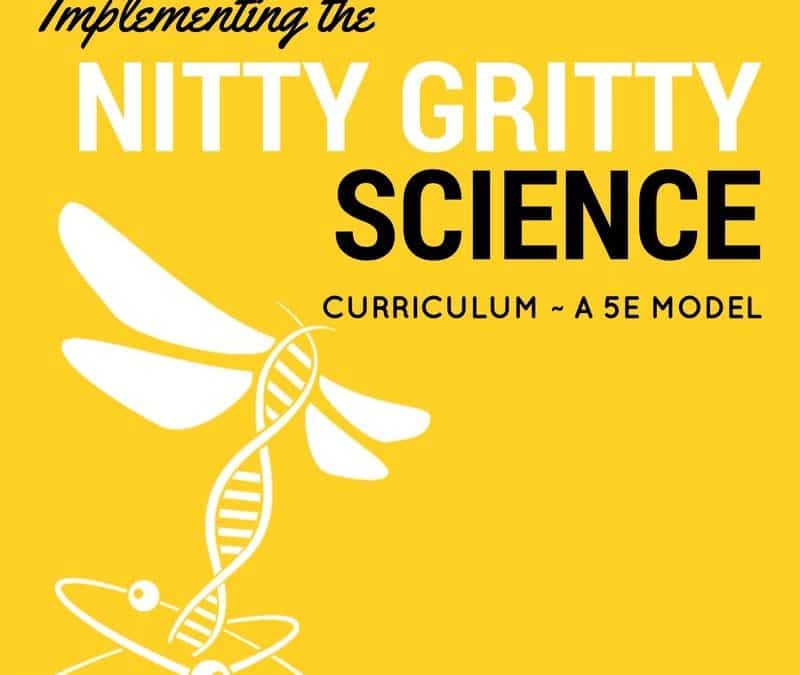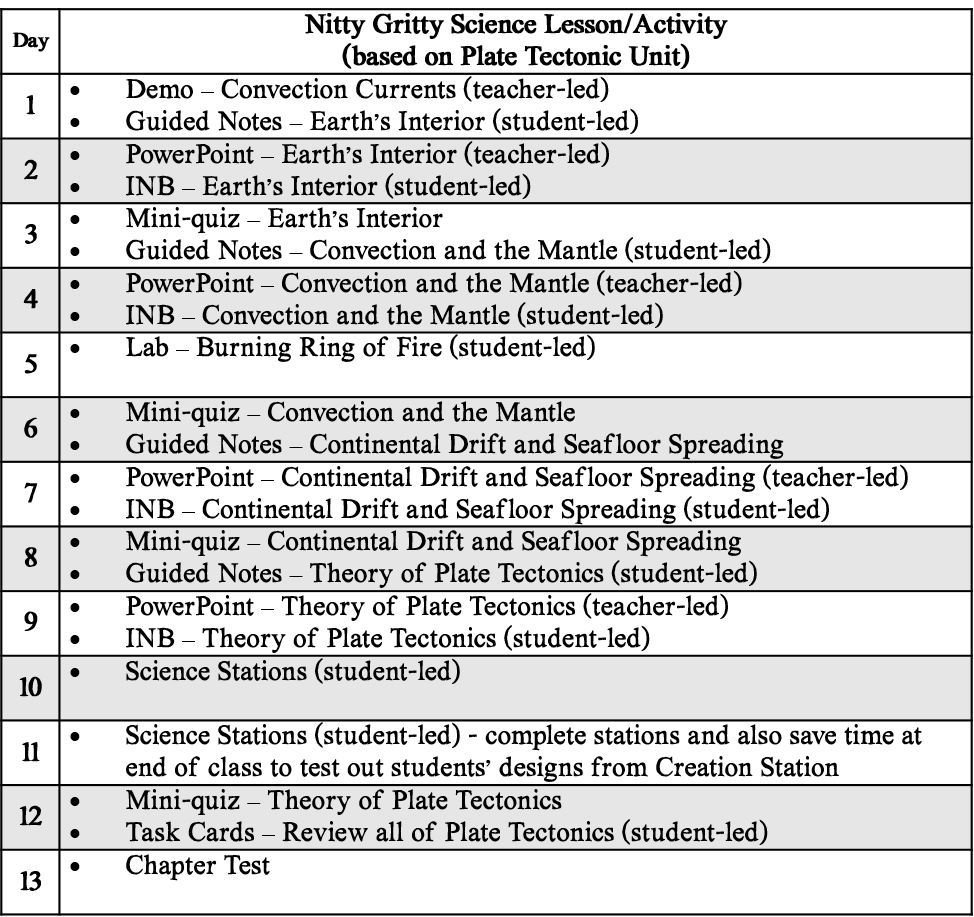Why Planning is So Important
Planning is one of the most important functions of teaching. Whether you’re a new or veteran teacher, the process of thinking through a science course, its units, and the lessons nested within each unit can be overwhelming. The number one thing a teacher needs to create an effective plan is TIME, and we all know, just like colored ink and cookies in the teacher lounge, time is scarce.
I know firsthand the list of non-instructional tasks that teachers face is never-ending and usually needs to be completed during your designated planning time, am I right? So, with the planning time you do have, I want to help you be productive as possible by sharing a “game plan” of how you can most effectively use the Nitty Gritty Science curriculum.
I am sharing this “game plan” with full recognition that classroom teachers are in the best position to decide at what pace the content is covered for their students. I have complete confidence that teachers will adapt this plan based on the unique situations each classroom and group of students bring to the table.
Note:
This post will be based around the Nitty Gritty Science Curriculum which follows the 5E Instructional Model  for learning. If you are unfamiliar with this model, you can read about it here. However, if you are not currently using NGS curriculum, you will still be able to see the order in which curriculum is presented for each unit, and can still apply aspects of this plan.
for learning. If you are unfamiliar with this model, you can read about it here. However, if you are not currently using NGS curriculum, you will still be able to see the order in which curriculum is presented for each unit, and can still apply aspects of this plan.
The Game Plan
Engagement
· Demos
Explore
· Interactive Notebook activities (student-output)
· Labs
Explain
· PowerPoints
· Guided Notes
Elaborate
· Science Stations
· Task cards
Evaluate
· Mini-quizzes
· Chapter Tests
Each resource mentioned above can be found in my Complete Course Curriculum Bundles for Earth, Life or Physical Science.
For this unit plan example, I will be using my Plate Tectonics Unit which is based on a 50 minute class. This unit has four sections of notes and activities in the Interactive Notebook. For the student notes, I have provided a guided outline that I’ve made from my editable notes bundle that they are to complete in groups or on their own.
There you have it, a perfect plan. But, as we all know the saying, “the best laid plans…” Okay, so that’s really all I know of that saying, but what I do know for sure is that plans rarely go as they should, especially lesson plans. So what do teachers do? Teachers adjust.
Adjusting the Plan to Work for You and Your Students
Here are some variations I’ve had to do with this plan because, well, because of field trips, pep assemblies, fire drills, projects, furlough days, sub days, half days, field days, students-get-done-too-quickly days, students-need- more-time days…you get the idea.
· Double-up on notes – give two sections of notes at a time, and whatever doesn’t get done in class needs to be completed as homework.
· Use the sentence-completion variation of notes to help out with time or for student differentiation.
· Have students fill in notes as you lecture using the PowerPoint. Personally, I feel this option should ONLY be done if you are under huge time constraints. I feel that students are at a disadvantage if they are writing while you are lecturing, because they are only focused on trying to write down information before you go to next slide, instead of focusing on the content.
· I’ve designed my INB’s with the idea that students would work in groups when completing their activity. By working in cooperative groups, students will tend to have increased involvement and more scientific discussions will occur, making science concepts more concrete. The adjustment for INB’s would be to assign the activity for homework rather than have students complete in class.
Frequently Asked Questions
If you have further questions, feel free to put them in the comments below, or email me directly at nittygrittyscience@gmail.com.
Question:
You start with notes (Explain phase) right after the demo, but in the 5E Model, shouldn’t the Lab (Explore phase) come after the demo (Engage phase)?
Answer:
The sequence of the 5E Model was designed to enhance students’ learning by letting them explore right after the engage phase so that students could try to clarify elements of the demonstration. However, from my experience, some introduction of the science concept needs to be given as a prerequisite for students to feel knowledgeable during the lab.
Question:
You have students doing four interactive notebook activities – doesn’t this get repetitive for them?
Answer:
Not at all! I’ve designed my Interactive Notebook so that each one is original and engaging. I’ve also made sure the needs of all your different learners – linguistic, logical-mathematical, spatial, kinesthetic, and yes, even your musical (PS Sound, Light and Mirrors) – have been met.
Question:
Will your curriculum work with my special needs and/or ELL students?
Answer:
Yes, yes, yes! I provide language support strategies for English Language Learners with multiple modes of representation besides text, such as pictorial and graphic. There are also many opportunities for differentiation with the editable notes, PowerPoints and tests.
Take care,
Erica



